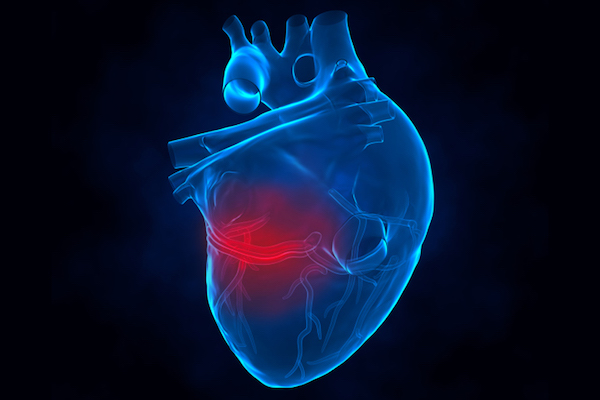Kisspeptin serum levels in acute myocardial infarction patients and healthy individuals
DOI:
https://doi.org/10.15419/bmrat.v5i3.424Keywords:
Acute myocardial infarction, Heart disease, KisspeptinAbstract
Introduction: Acute myocardial infarction (AMI) is a leading cause of mortality worldwide for which several risk factors have been identified. Kisspeptin is a multifunctional peptide observed in atherosclerotic plaques. This study aimed to compare kisspeptin serum levels in AMI patients and healthy individuals.
Methods: This case-control study was conducted on patients visiting the Cardiology department of Peymanieh Hospital, Jahrom University of Medical Sciences, Iran. Participants were randomly divided into a case and a control groups; the former consisting of 90 AMI patients and the latter of 90 healthy individuals with no cardiac diseases. Blood samples were collected from the participants who also completed the given questionnaire. The enzyme-linked immunosorbent assay (ELISA) test was used to determine kisspeptin levels following serum separation from collected blood samples. Data analysis was performed in SPSS-19 using descriptive (mean and standard deviation) and analytical (The Mann-Whitney U test) statistical tests.
Results: The mean age of treatment and control groups was 60.91 and 61.72 years, respectively. The majority (73.3%) of participants in this study were men. Kisspeptin serum concentrations were demonstrated to be significantly lower in the case group than the control group (P<0.001). The results of Mann-Whitney U test revealed that kisspeptin serum concentrations of case and control groups did not have a significant relationship with such variables as gender, smoking, and ST-segment elevation and non-ST-segment elevation (P>0.05).
Conclusion: The results revealed that kisspeptin serum concentrations of AMI patients were significantly lower than those of healthy individuals. Accordingly, kisspeptin deficiency appears to be a risk factor for AMI. However, due to the multifunctional nature of this peptide, further studies are necessary to discover its precise mechanism of action.
References
Andreozzi, F., Mannino, G. C., Mancuso, E., Spiga, R., Perticone, F., & Sesti, G. (2017). Plasma kisspeptin levels are associated with insulin secretion in nondiabetic individuals. PLoS One, 12(6), e0179834. https://doi.org/10.1371/journal.pone.0179834 PMID:28636637
Apple, F. S., Wu, A. H., & Jaffe, A. S. (2002). European Society of Cardiology and American College of Cardiology guidelines for redefinition of myocardial infarction: How to use existing assays clinically and for clinical trials. American Heart Journal, 144(6), 981–986. https://doi.org/10.1067/mhj.2002.124048 PMID:12486421
De Bond, J.-A. P., & Smith, J. T. (2014). Kisspeptin and energy balance in reproduction. Reproduction (Cambridge, England), 147(3), R53–R63. https://doi.org/10.1530/REP-13-0509 PMID:24327738
Ergen, A., Canbay, E., Bugra, D., Zeybek, U., Yamaner, S., & Bulut, T. (2012). Plasma Kisspeptin-54 levels in gastric cancer patients. International Journal of Surgery, 10(9), 551–554. https://doi.org/10.1016/j.ijsu.2012.08.014 PMID:22959969
Hesling, C., D’Incan, M., Mansard, S., Franck, F., Corbin-Duval, A., Chèvenet, C., . . . Bignon, Y. J. (2004). In vivo and in situ modulation of the expression of genes involved in metastasis and angiogenesis in a patient treated with topical imiquimod for melanoma skin metastases. British Journal of Dermatology, 150(4), 761–767. https://doi.org/10.1111/j.0007-0963.2004.05898.x PMID:15099376
Libby, P., Okamoto, Y., Rocha, V. Z., & Folco, E. (2010). Inflammation in atherosclerosis: Transition from theory to practice. Circulation Journal, 74(2), 213–220. https://doi.org/10.1253/circj.CJ-09-0706 PMID:20065609
Maguire, J. J., Kirby, H. R., Mead, E. J., Kuc, R. E., d’Anglemont de Tassigny, X., Colledge, W. H., & Davenport, A. P. (2011). Inotropic action of the puberty hormone kisspeptin in rat, mouse and human: Cardiovascular distribution and characteristics of the kisspeptin receptor. PLoS One, 6(11), e27601. https://doi.org/10.1371/journal.pone.0027601 PMID:22132116
Mead, E. J., Maguire, J. J., Kuc, R. E., & Davenport, A. P. (2007). Kisspeptins are novel potent vasoconstrictors in humans, with a discrete localization of their receptor, G protein-coupled receptor 54, to atherosclerosis-prone vessels. Endocrinology, 148(1), 140–147. https://doi.org/10.1210/en.2006-0818 PMID:17023533
Mensah, G. A. (2007). Healthy endothelium: The scientific basis for cardiovascular health promotion and chronic disease prevention. Vascular Pharmacology, 46(5), 310–314. https://doi.org/10.1016/j.vph.2006.10.013 PMID:17229594
Osto, E., Coppolino, G., Volpe, M., & Cosentino, F. (2007). Restoring the dysfunctional endothelium. Current Pharmaceutical Design, 13(10), 1053–1068. https://doi.org/10.2174/138161207780487566 PMID:17430168
Zhu, H. J., Li, S. J., Pan, H., Li, N., Zhang, D. X., Wang, L. J., . . . Gong, F. Y. (2016). The Changes of Serum Leptin and Kisspeptin Levels in Chinese Children and Adolescents in Different Pubertal Stages. International Journal of Endocrinology, 2016, 6790794. https://doi.org/10.1155/2016/6790794 PMID:27990162
Prague, J. K., & Dhillo, W. S. (2015). Potential clinical use of kisspeptin. Neuroendocrinology, 102(3), 238–245. https://doi.org/10.1159/000439133 PMID:26277870
Samson, W. K., Resch, Z. T., & Murphy, T. C. (2000). A novel action of the newly described prolactin-releasing peptides: Cardiovascular regulation. Brain Research, 858(1), 19–25. https://doi.org/10.1016/S0006-8993(99)02451-8 PMID:10700591
Verma, S., Wang, C.-H., Li, S.-H., Dumont, A. S., Fedak, P. W., Badiwala, M. V., . . . Stewart, D. J. (2002). A self-fulfilling prophecy: C-reactive protein attenuates nitric oxide production and inhibits angiogenesis. Circulation, 106(8), 913–919. https://doi.org/10.1161/01.CIR.0000029802.88087.5E PMID:12186793
Zimmerman, F. H., Cameron, A., Fisher, L. D., & Ng, G. (1995). Myocardial infarction in young adults: Angiographic characterization, risk factors and prognosis (Coronary Artery Surgery Study Registry). Journal of the American College of Cardiology, 26(3), 654–661. https://doi.org/10.1016/0735-1097(95)00254-2 PMID:7642855

Downloads
Published
Issue
Section
License
Copyright The Author(s) 2017. This article is published with open access by BioMedPress. This article is distributed under the terms of the Creative Commons Attribution License (CC-BY 4.0) which permits any use, distribution, and reproduction in any medium, provided the original author(s) and the source are credited.
